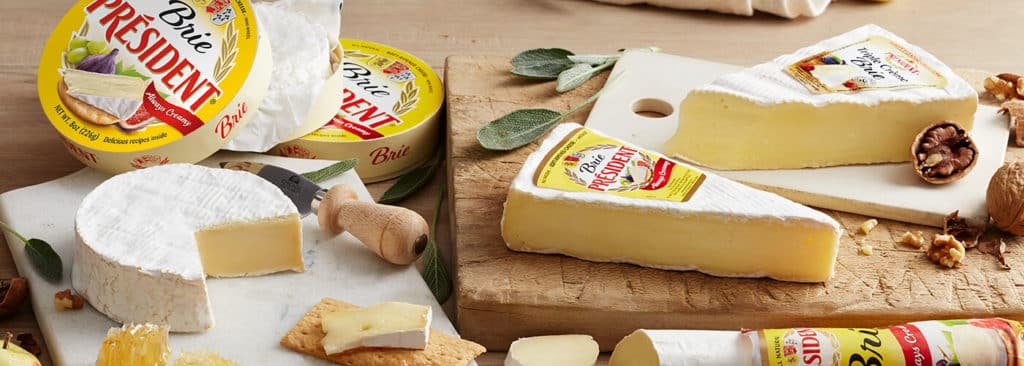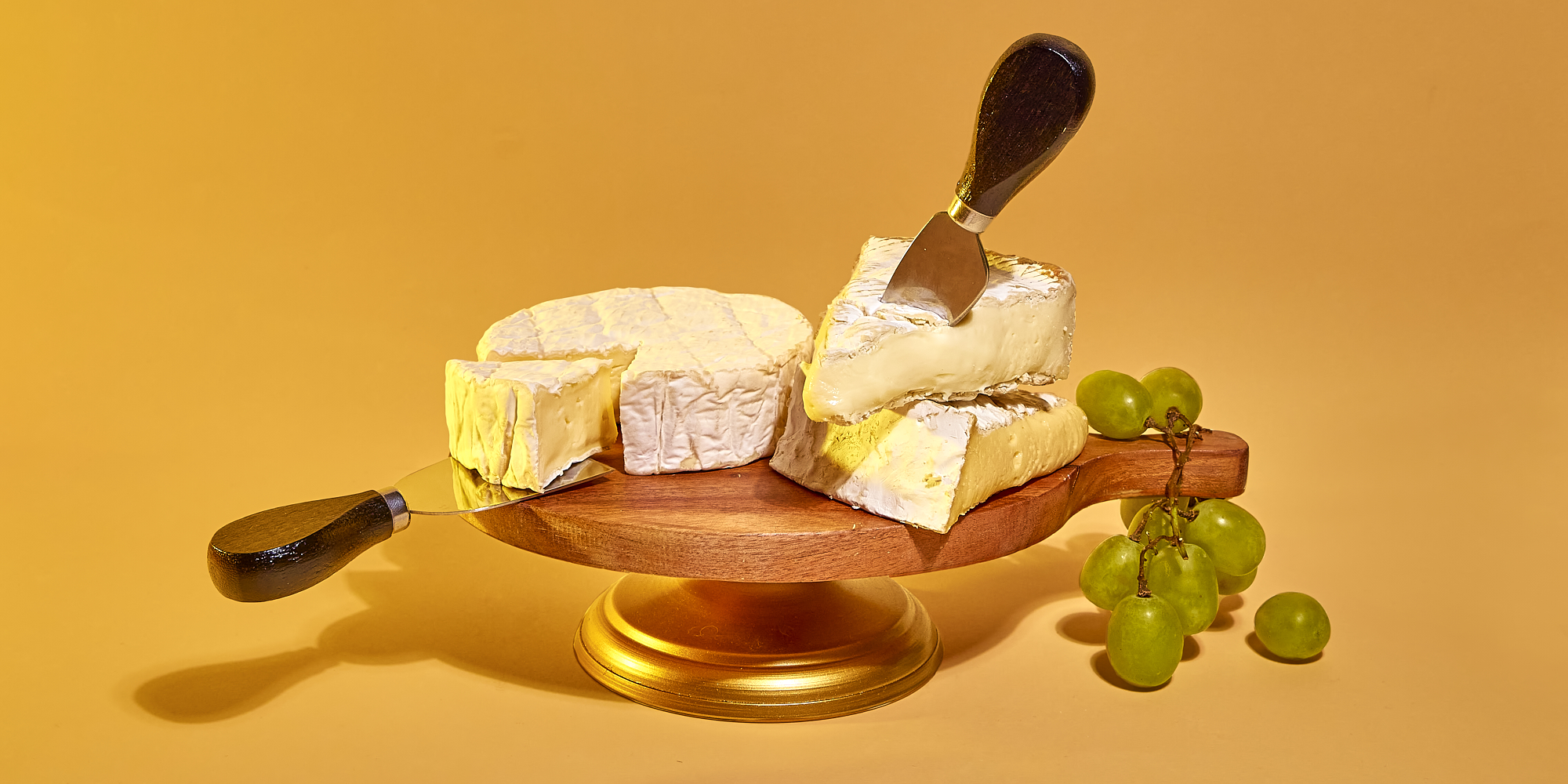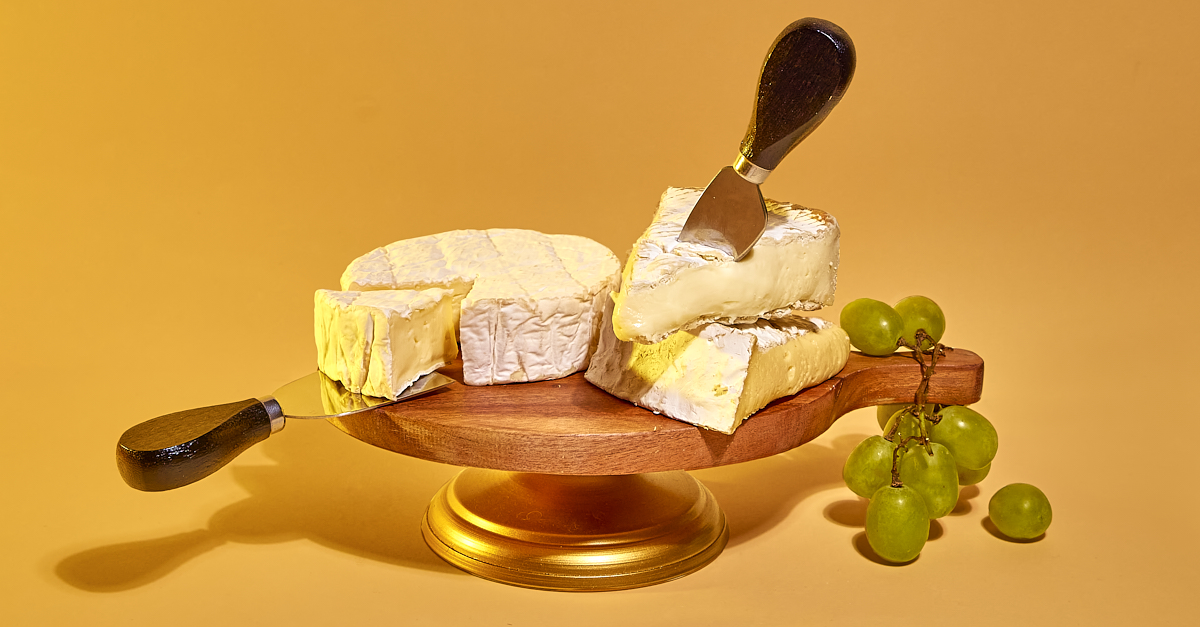Introduction

In the world of French cheese, Camembert and Brie hold a special place. These two renowned cheeses have captivated palates around the world with their distinct flavors and creamy textures. While they may appear similar, there are subtle variations that set them apart. This article aims to unravel the mystery of Camembert cheese and Brie, exploring their origins, production processes, flavor profiles, and culinary uses. Join us on this flavorful journey as we delve into the rich history and cultural significance of these iconic French cheeses.
Overview Of Camembert Cheese And Brie
Camembert cheese and Brie are two renowned French soft cheeses that have captured the hearts of cheese enthusiasts around the world. Both cheeses belong to the category of white mold surface-ripened cheeses and have a rich history and cultural significance. While they may appear similar, each cheese has its own distinct characteristics and flavor profile. Camembert, known for its earthy and mushroom-like flavor, is creamy with a bloomy rind. On the other hand, Brie has a milder taste with a buttery and savory undertone. These cheeses are versatile in culinary uses and are often enjoyed on their own or paired with various accompaniments.
French Origins And Popularity Of Camembert Cheese And Brie
Camembert cheese and Brie, two iconic French cheeses, have their origins deeply rooted in the French countryside. Brie, believed to have been created in the 8th century, has a long history that predates Camembert. On the other hand, Camembert was created in the 18th century by Marie Harel in the region of Normandy. These cheeses gained immense popularity in France and eventually spread worldwide. Known for their exquisite taste and creamy textures, Camembert and Brie have become staples in French cuisine and are now cherished by cheese lovers around the globe.
Camembert Cheese

Camembert Cheese is a beloved French delicacy known for its creamy texture and rich flavor. It has a history that dates back to the 18th century, when it was created by Marie Harel in the Normandy region of France. Made from cow’s milk, Camembert undergoes a unique production process that involves the use of specific bacteria and molds to develop its distinctive taste and aroma. This cheese is characterized by its soft, bloomy rind and gooey interior. Whether enjoyed on its own, spread on a baguette, or melted in dishes, Camembert Cheese is a true delight for cheese connoisseurs.
Camembert Cheese: History And Production
Camembert Cheese has a rich history that dates back to the 18th century in the Normandy region of France. It was originally created by Marie Harel, a farmer, who combined her local milk with specific bacteria and molds to develop this iconic cheese. The production process of Camembert involves carefully curdling the milk, molding it into small rounds, and allowing it to age for a period of time. During this aging process, the cheese develops its soft, bloomy rind and creamy interior. Today, Camembert production has become more regulated, ensuring the consistent quality and flavors that cheese lovers adore.
Camembert Cheese: Flavor Profile And Texture
Camembert cheese is renowned for its distinct flavor profile and creamy texture. When fully ripened, Camembert exhibits a deliciously rich and earthy taste, often described as buttery and slightly tangy. It has a velvety smooth texture that coats the palate, becoming increasingly gooey towards the center. The cheese’s bloomy rind adds a subtle mushroomy aroma, enhancing the overall sensory experience. Its creamy interior is luxuriously soft and melts in the mouth, making it a delightful treat for cheese enthusiasts. Camembert’s unique blend of flavors and textures makes it a beloved choice for cheese connoisseurs around the world.
Brie

Brie, another exquisite French cheese, has its own distinct characteristics. Originating from the region of Brie in northern France, it has a rich history and a strong tradition. Brie is known for its aromatic profile and creamy texture. When fully ripe, it delivers a soft and buttery experience on the palate. The rind of Brie is thin and edible, adding a subtle earthy flavor. This cheese is versatile and can be enjoyed on its own, spread on crackers, or used in various culinary creations. Brie’s unique qualities make it a favorite among cheese connoisseurs.
Brie Cheese: Origins And Traditions
Brie cheese, named after the region of Brie in northern France, has a rich history and strong tradition. It is believed to have been created as early as the 8th century. Brie cheese was originally made by farmers in the region and was often given as a tribute to French royalty. Over time, it gained popularity and became a staple in French cuisine. The production of Brie cheese follows traditional methods, using raw cow’s milk and specific aging techniques. Its distinct creamy texture and aromatic flavor make Brie cheese a beloved delicacy around the world.
Brie Cheese: Aromatic Profile And Creamy Texture
Brie cheese is known for its distinct aromatic profile and creamy texture. The cheese has a rich and slightly sweet aroma, with hints of earthiness and mushroom. Its creamy texture melts in the mouth, giving a luscious and buttery sensation. Brie cheese is characterized by its smooth and velvety consistency, making it a perfect choice for spreading on a crusty baguette or crackers. The creamy texture of Brie cheese enhances the flavor, allowing it to be combined with various ingredients such as fruits, nuts, and even honey, creating a delightful taste experience.
Differences Between Camembert Cheese And Brie

Camembert Cheese and Brie may share similarities, but there are distinct differences that set them apart. Camembert typically has a stronger and more robust flavor compared to Brie, which is milder and creamier. In terms of texture, Camembert tends to be softer and gooey in the center, while Brie has a firmer and denser texture. Additionally, Camembert has a thicker rind compared to Brie. These differences in taste, texture, and appearance make each cheese unique and suitable for different culinary applications.
Variations In Taste, Texture, And Aroma
When it comes to taste, Camembert Cheese tends to have a stronger and more robust flavor compared to Brie. Camembert’s flavor is often described as earthy, mushroom-like, and slightly tangy. On the other hand, Brie has a milder and more delicate flavor, offering notes of butter and cream.
In terms of texture, Camembert is known for its gooey and creamy center, whereas Brie has a firmer and denser texture, although it can still become creamy when fully ripe.
As for aroma, Camembert has a more pungent and aromatic smell, while Brie exudes a subtle and pleasant aroma.
These variations in taste, texture, and aroma make each cheese distinct and suitable for different preferences and culinary applications.
Cultural Significance And Uses In Culinary Dishes
Camembert cheese and Brie hold significant cultural significance in French cuisine. Both cheeses are integral parts of French culinary traditions and are frequently enjoyed in various dishes. Camembert and Brie are often served as a standalone cheese course, accompanied by fresh bread, fruits, and nuts. They can also be melted and used in a wide range of savory recipes, such as tarts, quiches, and grilled sandwiches. Their creamy texture and distinctive flavors enhance the taste of these dishes, making them a popular choice in French gastronomy. These cheeses are beloved by cheese enthusiasts and are often showcased in cheese platters and gourmet events worldwide.
Pairing And Serving

When it comes to pairing and serving Camembert cheese and Brie, there are a few key considerations.
For Camembert, its strong flavor and creamy texture make it an excellent pairing for bold wines like Cabernet Sauvignon or Pinot Noir. The richness of Camembert also pairs well with fruits like apples, pears, and grapes, as well as with nuts and crusty bread.
On the other hand, Brie’s milder flavor lends itself to pairing with lighter wines like Chardonnay, Sauvignon Blanc, and other white wines. It can be enjoyed with fresh fruits like strawberries and melon, as well as with crispy crackers or baguette slices.
When serving Camembert and Brie, it’s best to bring them to room temperature to fully appreciate their flavors and creamy textures. Cut the cheese into wedges or slices, and present them on a cheese board or platter. Accompany them with complementary ingredients such as dried fruits, nuts, honey, or a touch of herbs for added flavor.
Whether enjoying them as part of a cheese course or incorporating them into a delicious recipe, pairing and serving Camembert cheese and Brie is sure to elevate any culinary experience.
Best Pairings For Camembert Cheese And Brie
When it comes to pairing Camembert cheese and Brie, there are a few key considerations. Camembert’s strong flavor and creamy texture make it an excellent pairing for bold wines like Cabernet Sauvignon or Pinot Noir. The richness of Camembert also pairs well with fruits like apples, pears, and grapes, as well as with nuts and crusty bread. On the other hand, Brie’s milder flavor lends itself to pairing with lighter wines like Chardonnay, Sauvignon Blanc, and other white wines. It can be enjoyed with fresh fruits like strawberries and melon, as well as with crispy crackers or baguette slices. When serving Camembert and Brie, it’s best to bring them to room temperature to fully appreciate their flavors and creamy textures. Accompany them with complementary ingredients such as dried fruits, nuts, honey, or a touch of herbs for added flavor. Whether enjoying them as part of a cheese course or incorporating them into a delicious recipe, the best pairings for Camembert cheese and Brie are sure to enhance any culinary experience.
Perfect Serving Suggestions And Accompaniments
When serving Camembert cheese and Brie, it’s important to consider the perfect accompaniments to elevate the flavors and presentation. For Camembert, serving it with slices of crusty baguette or a selection of artisanal crackers is a classic choice. Additionally, pairing it with fruits like apples, pears, and grapes adds a refreshing and sweet contrast to the rich and earthy flavors of the cheese. For Brie, serving it with fresh fruits like strawberries and melon provides a burst of sweetness that complements its mild flavor. Crispy crackers or baguette slices also work well to enhance the creamy texture of Brie. Don’t forget to bring the cheeses to room temperature before serving to fully appreciate their flavors and creaminess.
Conclusion

In conclusion, understanding the differences between Brie and Camembert is crucial for cheese enthusiasts and culinary explorers alike. These two iconic French cheeses may appear similar, but their unique characteristics set them apart. By delving into their history, production processes, flavors, and culinary uses, we gain a deeper appreciation for the artistry and craftsmanship behind each cheese. Whether you prefer the creamy and mild flavor of Brie or the earthy and tangy notes of Camembert, both cheeses offer a delightful experience that can be enjoyed on their own or paired with a variety of accompaniments. Bon appétit!
Key Takeaways On Camembert Cheese Vs Brie
In conclusion, understanding the differences between Camembert cheese and Brie is crucial for cheese enthusiasts and culinary explorers alike. While both cheeses originate from the north of France and are known for their creamy texture and mouth-watering flavor, they have distinct characteristics. Camembert cheese has a more rustic, earthy taste and texture, while Brie offers a refined taste and smooth texture. Both cheeses are delicious in their own right and can be enjoyed on their own or paired with various accompaniments. Whether you prefer the tangy notes of Camembert or the mild flavor of Brie, both cheeses provide a delightful culinary experience.
Recommendations For Cheese Enthusiasts
For cheese enthusiasts looking to explore the world of Camembert cheese and Brie, there are a few key recommendations to keep in mind. Firstly, it is highly recommended to source these cheeses from reputable and authentic producers in order to experience their true flavors and textures. Additionally, experimenting with different accompaniments and pairings can enhance the overall cheese tasting experience. Trying Camembert and Brie with various fruits, crackers, and breads can uncover new flavor combinations and elevate the enjoyment of these cheeses. Lastly, cheese enthusiasts may consider attending cheese tastings or workshops to further expand their knowledge and appreciation of Camembert cheese and Brie.
FAQ About Camembert Cheese Vs Brie: Unraveling The French Cheese Mystery
Q: What is the main difference between Camembert cheese and Brie cheese?
A: The main difference lies in the texture and flavor profile. Camembert tends to be stronger and earthier, while Brie is milder and creamier.
Q: Are there differences in the production process of Camembert and Brie?
A: Yes, there are differences in the production process. Camembert is made in smaller wheels with a thicker white rind, while Brie is made in larger wheels with a thinner rind.
Q: Can Camembert be substituted for Brie in recipes?
A: Yes, Camembert can generally be substituted for Brie in recipes, but be aware that the flavor may be slightly different due to the stronger taste of Camembert.
Q: Which cheese is better for melting – Camembert or Brie?
A: Both Camembert and Brie are excellent for melting, but Camembert tends to retain its shape better when melted, while Brie becomes more gooey and creamy.
Q: How should Camembert and Brie be stored?
A: Both cheeses should be stored in the refrigerator in their original packaging until ready to serve. Once opened, they should be wrapped in wax paper or parchment paper to allow them to breathe.
Q: Can the rind of Camembert and Brie be eaten?
A: Yes, the rind of both Camembert and Brie can be eaten. The rind is edible and adds an extra layer of flavor to the cheese.

Kostas Mediterranean is a family-owned Greek restaurant located in North Vancouver. Our passion for bringing the authentic flavors of Greece to the local community has been the driving force behind our establishment. We take pride in offering a warm and welcoming atmosphere where guests can experience the true essence of Greek hospitality. Our journey began with Kostas, whose culinary skills and love for Greek cuisine inspired the creation of the restaurant. With a desire to share his family recipes and traditions, Kostas set out to create a dining experience that captures the spirit of Greece. The result is a menu that showcases a delightful blend of traditional and modern Greek dishes prepared with the finest and freshest ingredients.